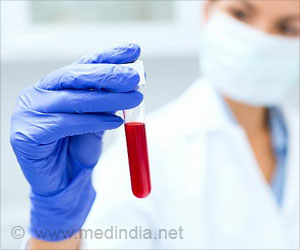Dried blood samples on a filter paper could be cheap and better for disease diagnosis and treatment, reveals study.
- Treatment for diseases could often fail due to late diagnosis.
- Dried blood samples could be cheaper and better than traditional methods for easy diagnosis and treatment of diseases.
- The samples on the filter paper could be kept unaltered even for about 30 years.
Why are Stored Blood Samples Important?
The blood samples that are stored could help in identifying disease markers that can be used for early detection of the disease when they can be curable.
The test tubes that could hold large volumes of blood plasma should be kept in big energy-guzzling freezers at 80°C. The resource-consuming method requires the patient to go to a healthcare unit where a trained nurse will obtain a venous blood sample. This could be sent to a lab for centrifugal separation of blood.
The sample that is collected and analyzed are saved in a biobank for further studies. However, the research hospital saves only 1% of all samples in a biobank while others are discarded.
Benefits of the New Method
The new method of storing blood samples on a filter paper could have a crucial development in healthcare.
- The proteins in the sample are allowed to dry and however remain completely unaltered even after 30 years.
- Dried samples are also used for health services routine checks.
- The test could be performed in the fast-growing laboratory service sector without engaging medical and health services.
- The samples can also be used to set up large-scale biobanks.
- More samples can be analyzed easily and collection of high blood samples could be saved.
The research study involved analyzing dried blood spots (DBS), of which few of them are collected recently and others had been preserved for up to 30 years in biobanks in Sweden and Denmark.
The DBS samples were mostly collected from newborn babies for screening 20 congenital metabolic disorders. Wet plasma samples were also used for the study.
The research team also examined the effects of long-term storage on what happens to protein detection as an effect of the drying process.
Johan Bjorkesten, doctoral student at Uppsala University, said, "Our conclusion is that we can measure levels of 92 proteins with very high precision and sensitivity using PEA technology in the tiny, punched-out discs from a dried blood spot. The actual drying process has a negligible effect on the various proteins and the effect is reproducible, which means that it can be included in the calculation."
PEA Technology
The proximity extension assay (PEA) allows detection of 96 protein levels that are punched out of a dried blood spot on a filter paper. The company has also used factors.
Future Research and Development
The use of biobanks for proteins or RNA molecules that reflect disease progression has been growing rapidly.
Samples that are collected from the same individual are important for identifying biomarkers.
It has two advantages, the individuals can themselves be the control participants and it also helps to locate the patient’s sample that is taken before the onset of the disease.
However, there is one precondition, the availability of a large number of samples can be collected regularly from a number of individuals.
The cost of the individual samples should be low from sampling to storage. This can be simple and preferably does not require any healthcare staff to be involved.
Advantages of Dried Blood Samples
- Minimal stress for patients
- Collection and storage costs are low
- There is no requirement for highly trained staff to do the sampling
- Samples can be sent through letter post
- Storage conditions are simple
However, one limitation of dried blood samples is the small quantity of blood sampled which can prevent the results from being full-proof.
The long-term DBS storage could also affect the detectability of certain proteins than others.
The research team has found that relative low storage temperature could be preferable for proteins that could be affected by storage.
Some part of the analysis was however complicated that made the conclusion less clearcut.
References
- Björkesten, et al. Stability of Proteins in Dried Blood Spot Biobanks. Molecular & Cellular Proteomics.DOI. 10.1074/mcp.RA117.000015
Source-Medindia












